Milestone Colorado River Management Plan Mostly Worked Amid Epic Drought, Review Finds
WESTERN WATER SPOTLIGHT: Draft assessment of 2007 Interim Guidelines expected to provide a guide as talks begin on new river operating rules for the iconic Southwestern river
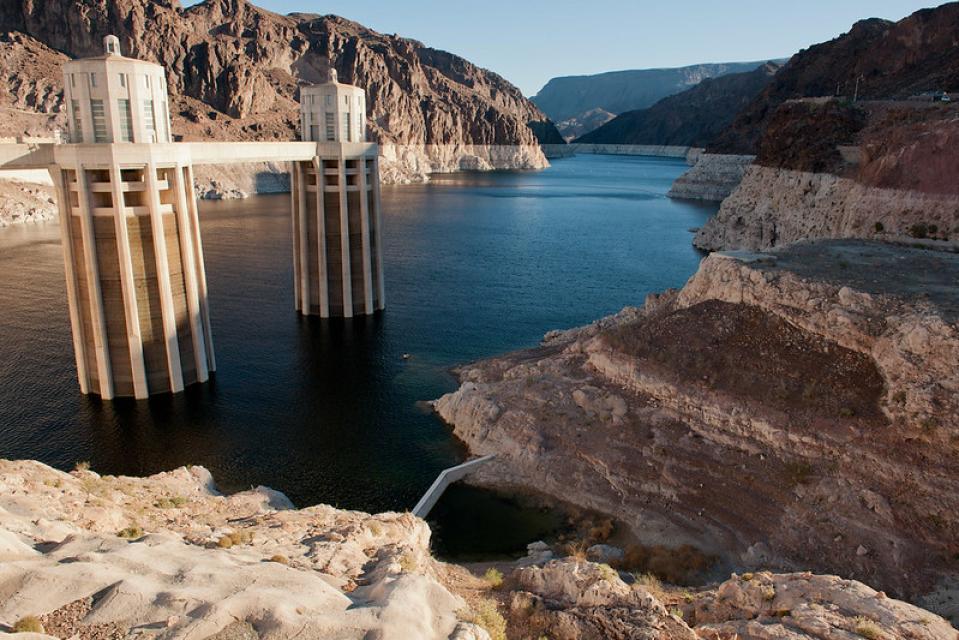 Twenty years ago, the Colorado River
Basin’s hydrology began tumbling into a historically bad stretch.
The weather turned persistently dry. Water levels in the system’s
anchor reservoirs of Lake Powell and Lake Mead plummeted. A river
system relied upon by nearly 40 million people, farms and
ecosystems across the West was in trouble. And there was no guide
on how to respond.
Twenty years ago, the Colorado River
Basin’s hydrology began tumbling into a historically bad stretch.
The weather turned persistently dry. Water levels in the system’s
anchor reservoirs of Lake Powell and Lake Mead plummeted. A river
system relied upon by nearly 40 million people, farms and
ecosystems across the West was in trouble. And there was no guide
on how to respond.
So key players across the Basin’s seven states, including California, came together in 2005 to attack the problem. The result was a set of Interim Guidelines adopted in 2007 that, according to a just-released assessment from the Bureau of Reclamation, mostly worked. Stressing flexibility instead of rigidity, the guidelines stabilized water deliveries in a drought-stressed system and prevented a dreaded shortage declaration by the federal government that would have forced water supply cuts.
Those guidelines, formally called “Interim Guidelines for Lower
Basin Shortages and the Coordinated Operations for Lake Powell
and Lake Mead,” are set to expire in 2026.  As stakeholders in the Colorado River Basin — including
water agencies, states, Native American tribes and
nongovernmental organizations — prepare to renegotiate a new set
of river operating guidelines, Reclamation’s assessment is
expected to provide a guide for future negotiations.
As stakeholders in the Colorado River Basin — including
water agencies, states, Native American tribes and
nongovernmental organizations — prepare to renegotiate a new set
of river operating guidelines, Reclamation’s assessment is
expected to provide a guide for future negotiations.
“We find that the guidelines were largely effective,” said Carly Jerla, modeling and research group manager with the Bureau of Reclamation’s Lower Colorado River region and one of the report’s authors. However, the Interim Guidelines could not solve all of the challenges brought by what has become a two-decade-long drought in the Basin. Said Jerla: “We saw risk getting too high and needed additional assets.”
Preserving Lake Mead
With the guidelines as a foundation, those assets arrived in 2019 through drought contingency plans for the Upper and Lower Basin – voluntary reduction commitments that built a firewall against the likelihood of Lake Mead dropping to critically low levels.
Chris Harris, executive director of the Colorado River Board of California, said the guidelines achieved their objective, considering that the drought has essentially persisted since 2000. Even with the severity and longevity of the drought, the guidelines kept the two reservoirs at about 50 percent of capacity since 2007.
“To my mind that’s a pretty good marker that we were generally successful,” Harris said.
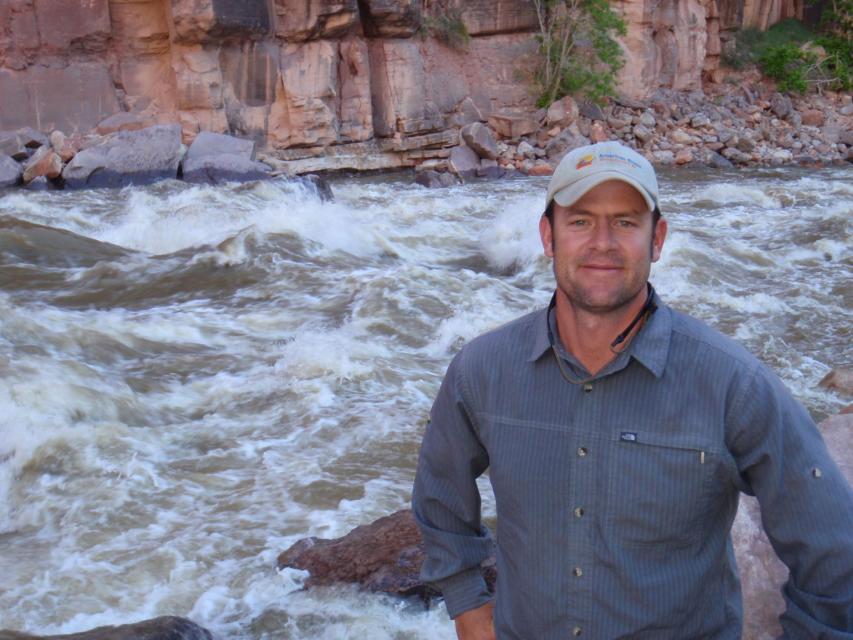 Reclamation’s review of the Interim
Guidelines was released for public comment in October. It is
expected to be finalized in December. After that, discussions are
expected to begin to hammer out a new set of operating rules that
would be ready to take effect when the existing guidelines expire
in 2026.
Reclamation’s review of the Interim
Guidelines was released for public comment in October. It is
expected to be finalized in December. After that, discussions are
expected to begin to hammer out a new set of operating rules that
would be ready to take effect when the existing guidelines expire
in 2026.
Reclamation’s review, which was required under the guidelines, focused solely on how effectively the Interim Guidelines managed water shortages and storage in Lake Powell and Lake Mead. It did not include existing environmental management programs such as the Glen Canyon Dam Adaptive Management Program that are independent of the guidelines. The 2026 guidelines should take a broader view, said Matt Rice, director of American Rivers’ Colorado River Basin Program.
“Not just looking at the two big buckets [reservoirs], but how do we ensure the river is healthy and has water for its environmental needs,” he said.
“How do we ensure that communities are considered, certainly the tribes, and how do we evaluate additional future demands, projects like the Lake Powell pipeline (a proposed project to deliver Lake Powell water to Southern Utah).”
Ensuring Tribal Participation
Tribal water rights are a key consideration to future Colorado River water use. Ten federally recognized tribes in the Upper and Lower Basins have reserved water rights, including unresolved claims, to divert about 2.8 million acre-feet of water per year from the river and its tributaries, according to Reclamation’s 2018 Tribal Water Study. These tribes anticipate diverting their full water rights by 2040.
“We hope that the review will … underscore the importance of meaningful and sustained participation of the Lower Basin tribes in any future guidelines development regarding management of the Colorado River.”
~Jon Huey, chair of the Yavapai-Apache Nation
Reclamation’s review emphasizes the need for listening to all voices, most notably tribes. Tribal representatives were largely overlooked in the development of the 2007 Interim Guidelines and tribes want to make sure their voices are heard when the next set of operating rules are drawn up.
“We hope that the review will remind Reclamation of the importance that Indian tribes have played in the stewardship of the Colorado River and underscore the importance of meaningful and sustained participation of the Lower Basin tribes in any future guidelines development regarding management of the Colorado River,” Jon Huey, chair of the Yavapai-Apache Nation in Arizona, wrote in a letter to Reclamation.
Jerla said Reclamation recognizes how important it will be to include the tribes in future discussions.
“We definitely heard that loud and clear,” she said. “I think the critical role that tribes have played in the activities since the Guidelines … their desire to be more involved and more included, they will absolutely be a key part of efforts going forward, no question.”
Balancing Water Uses
There is inherent tension in balancing Colorado River water uses
between the two basins. Part of the problem is users in the Lower
Basin can use Lake Mead as a bank account, having water released
downstream to them as they need it. Lake Powell, on the other
hand, sits at the bottom of the Upper Basin’s drainage and water
that flows into Powell is largely beyond reach of Upper Basin
users. 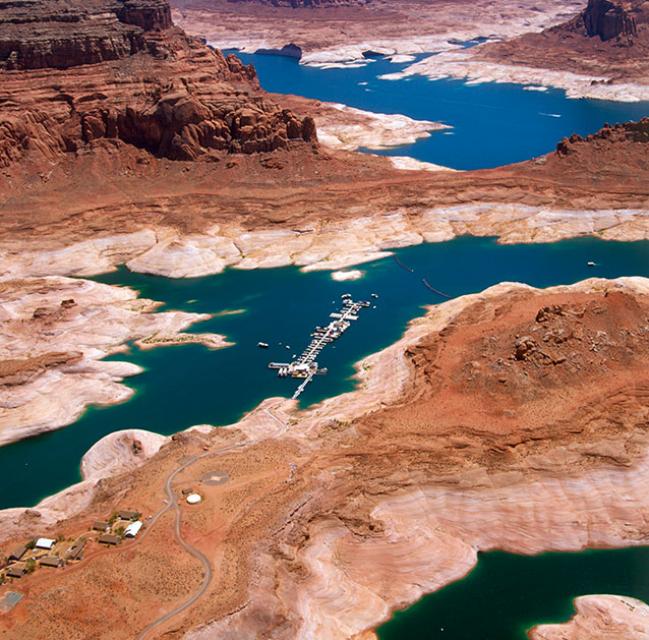
“The guidelines have been partially successful in that they have achieved their principal objective of preventing Lower Basin shortage, as well as establishing a Lower Basin conservation mechanism and avoiding litigation in the Basin,” said Amy Haas, executive director of the Upper Colorado River Commission. “However, from the standpoint of the coordinated operations of Lakes Powell and Mead, a secondary objective of the Guidelines, they have come up short.”
Haas pointed out that between 2015 and 2019, Lake Powell was required to release 9 million acre-feet of water annually under the Guidelines, even with poor inflows into Powell and below-average hydrology in the Upper Basin watershed. That’s more than has historically been required.
“Meanwhile, Lake Mead elevations have not substantially increased under the Guidelines due in large part to overuse in the Lower Basin, also known as the structural deficit,” she said. “These issues must be addressed in the post-2026 operational criteria.”
Protecting the Colorado River
Drought wreaked havoc on the Colorado River Basin between 2000 and 2004, with record dryness that depleted the combined storage of Lake Powell and Lake Mead. Conditions worsened quickly. At the beginning of the 2000 water year, the review said, the combined storage in Lake Powell and Lake Mead was 55.7 million acre-feet. After the worst five-year period of inflow on record ended in 2005, that storage fell to 29.7 million acre-feet – a striking loss of nearly half of the water in the two anchor reservoirs.
Something new had to be done. The business-as-usual approach of determining drought conditions for the Basin on a yearly basis was not going to provide long-term stability or prevent conflict under such historic dryness.
After the worst five-year period of inflow on record ended in 2005, [storage in Lake Powell and Lake Mead] fell to 29.7 million acre-feet – a striking loss of nearly half the stored water.
~Review of the Colorado River Interim Guidelines
“Failing to develop additional operational guidelines would make sustainable Colorado River management extremely difficult,” Reclamation’s review said.
The Interim Guidelines in 2007 opened the door for Lower Basin water users and Mexico to get creative about how water is managed and used. One example that grew out of the guidelines is Intentionally Created Surplus, allowing downstream parties to bank water in Lake Mead that they could draw upon later.
“One result of this new flexibility was that critical Lake Mead elevations could be protected through the conservation of this water in the lake,” said Tom Buschatzke, director of the Arizona Department of Water Resources. “The Basin states, meanwhile, continued to seek ways to protect reservoir levels and the health of the Colorado River system.”
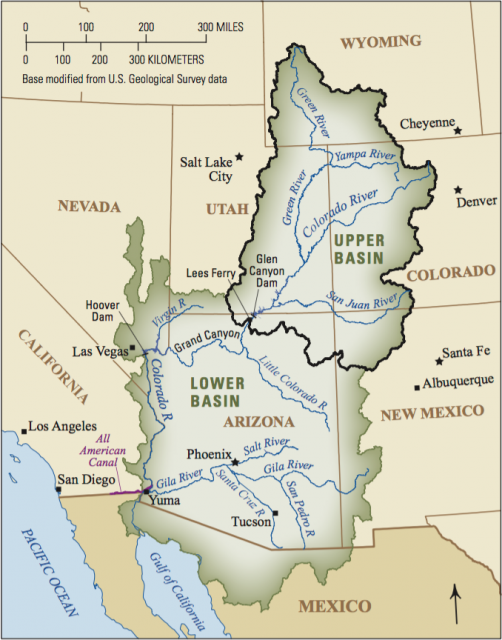 Saving Intentionally Created Surplus
water in Lake Mead turned out to be a critical drought response
tool, said Reclamation’s Jerla, ensuring that the lake’s water
level did not drop to where water users would be required to take
cuts.
Saving Intentionally Created Surplus
water in Lake Mead turned out to be a critical drought response
tool, said Reclamation’s Jerla, ensuring that the lake’s water
level did not drop to where water users would be required to take
cuts.
Reclamation’s review of the Interim Guidelines notes that there are other areas of interest beyond its scope that should be considered in future discussions, such as impacts of river operations to environmental, recreational and hydropower resources, and more meaningful engagement of Basin partners, stakeholders, tribes and states.
The review notes that since the Interim Guidelines were adopted, Reclamation has expanded its long-term modeling assumptions and worked to identify appropriate methods for analyzing uncertainty.
“Even though the true probability of any combination of conditions … cannot be assessed, a wider range of hydrology and demand assumptions and attention to those ranges … are useful for supporting a common understanding of system vulnerability,” the review says.
The Next Set of Guidelines
The 2007 Interim Guidelines have set the table for the next version of a Colorado River operations agreement. In retrospect, things have generally occurred as expected, Jerla said.
“In terms of where the reservoirs landed, what types of releases
Powell made and how successful the Intentionally Created Surplus
mechanism became, that is all within the range of what we were
projecting,” Jerla said. “It’s informative to know that now and
use that thinking 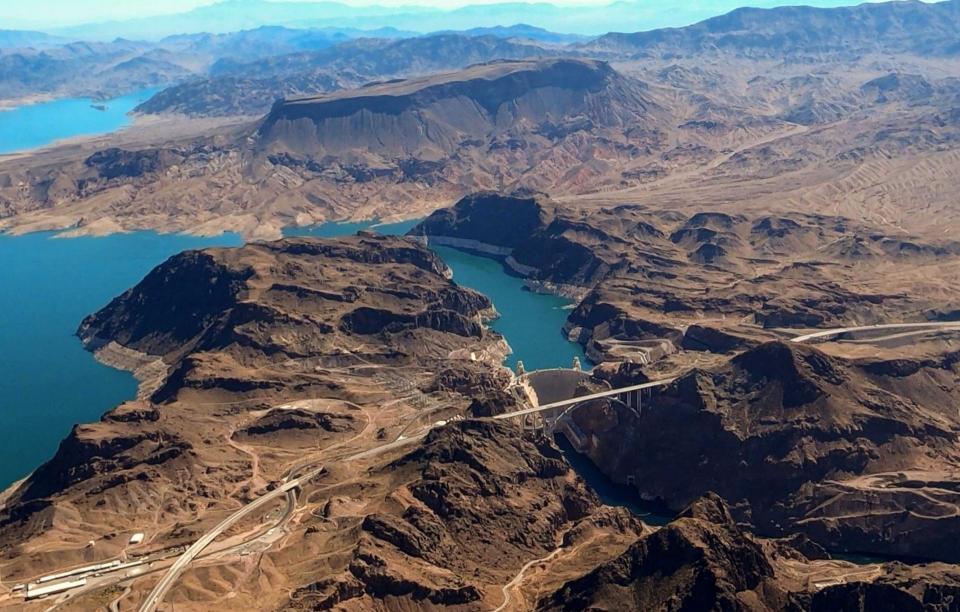 about how risk
influenced our decisions and how that translates into the next
set of action levels.”
about how risk
influenced our decisions and how that translates into the next
set of action levels.”
The Interim Guidelines instilled a degree of greater cooperation and innovation on the river and that has fostered partnerships, initiatives and actions that demonstrate what can be done in a Basin that is steadily getting drier.
“Those things have to continue,” Jerla said, adding that Reclamation’s review is one of many sources officials will consult as they draft the next set of guidelines.
Rice, with American Rivers, said he’s optimistic about the prospects of a broad group of stakeholders building the next set of Interim Guidelines.
“I am not suggesting that it’s going to be easy or straightforward by any means,” he said. “We certainly hope there will be greater participation from more stakeholders. The tribes are at the top of the list, but also nongovernmental organizations, which traditionally have not been part of these interbasin negotiations.”
The talks are likely to be frank and will explore thorny issues related to equitable water management.
 Arriving at a satisfactory
operational plan beyond 2026 means the Lower Basin’s structural
deficit has to be addressed and balancing releases between Lake
Powell and Lake Mead should be revisited to reflect actual
hydrology, said Haas, with the Upper Colorado River Commission.
“Also, the new guidelines should contain a mechanism whereby
operations can be adapted and adjusted to meet changing
conditions, something the current guidelines are not equipped to
do.”
Arriving at a satisfactory
operational plan beyond 2026 means the Lower Basin’s structural
deficit has to be addressed and balancing releases between Lake
Powell and Lake Mead should be revisited to reflect actual
hydrology, said Haas, with the Upper Colorado River Commission.
“Also, the new guidelines should contain a mechanism whereby
operations can be adapted and adjusted to meet changing
conditions, something the current guidelines are not equipped to
do.”
How the next set of river operating guidelines will take shape remains to be seen, but Reclamation’s review suggests the 2007 Interim Guidelines proved their worth in showing how water users can work together and think creatively, lessons that will be invaluable for the future.
The 2007 Interim Guidelines, the review said, “created the operational stability that became the platform for the collaborative decision-making that protected the Colorado River system from crisis.”
Reach Gary Pitzer: gpitzer@watereducation.org, Twitter: @GaryPitzer
Know someone else who wants to stay connected with water in the West? Encourage them to sign up for Western Water, and follow us on Facebook, Twitter and LinkedIn.








